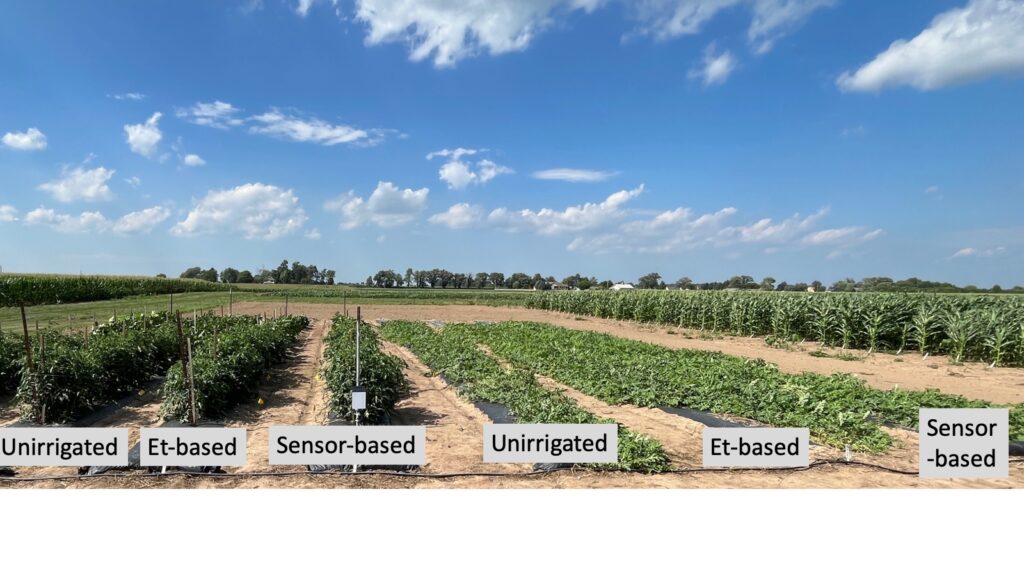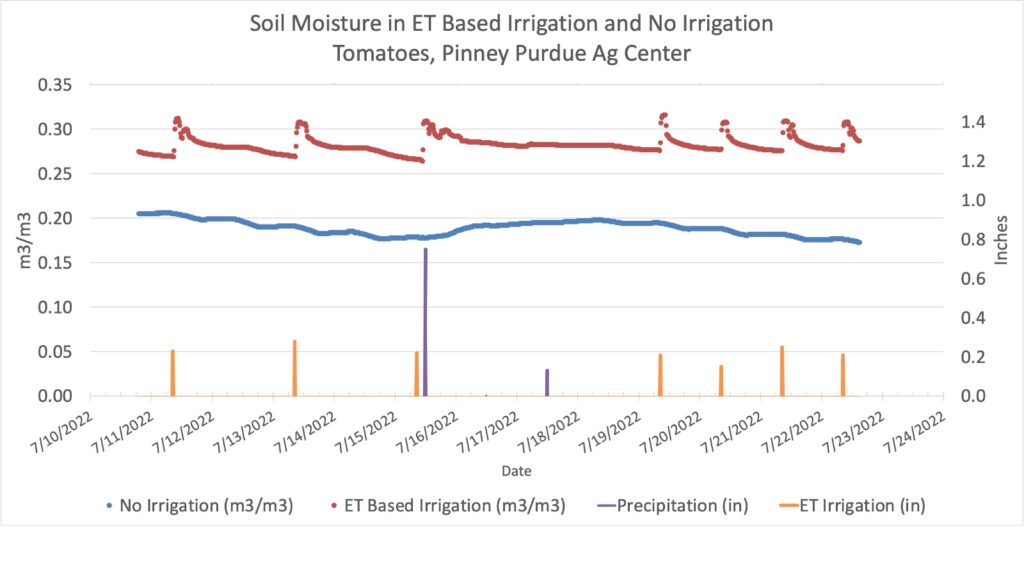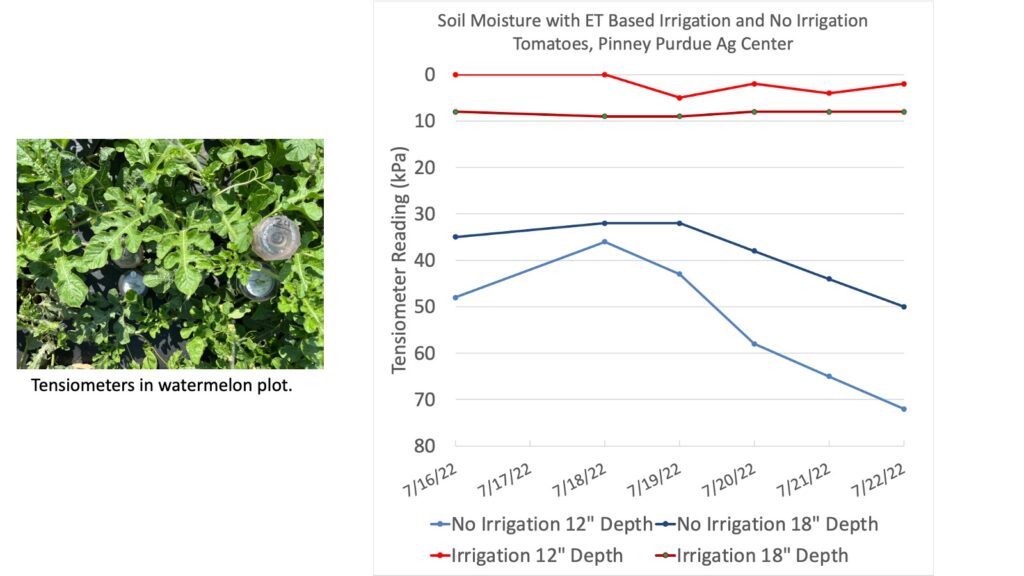At Pinney Purdue (PPAC) 2.19 inches of rain fell July 12 through July 26. The potential evapotranspiration (PET) over the period was 2.67 inches. Estimates for water use by the crops are somewhat lower than potential evapotranspiration. For tomatoes, estimated water use was 2.03 inches, and for watermelons, 1.54 inches. Dry periods between heavy rains meant that all irrigated beds were irrgated at least several times over the period.
Fruit are developing on tomato, pepper, and watermelon, and the earliest fruit have just set on eggplant. Flowering continues on all plants. Plants in the unirrigated plots appear slightly smaller than plants in the irrigated plots – not as tall and not as wide (Figure 1). A few watermelon plants have wilted in all irrigation treatments. Wilted watermelon sent to the diagnostic lab showed fuasrium wilt and some pythium root rot.

Figure 1. Overview of irrigation dedmonstration at Pinney Purdue Ag Center on July 21, 2022 and tensiometers in one of the watermelon beds.
We installed tensiometers 12 and 18 inches deep. The 12-inch depth provides a comparison between the soil moisture tension measurement provided by the tensiometer and the volumetric water content provided by the electronic sensor at the same depth. The 18-inch depth provides a glimpse of moisture deeper in the soil. Many existing recommendations for irrigation management refer to tensiometer measurements. With tensiomter measurements, the larger the number, the drier the soil.
The graphs below show sensor (Figure 2) and tensiometer (Figure 3) readings for the unirrigated and the Et-based tomato beds, along with bars indicating the daily totals of rainfall and irrigation. In the unirrigated bed, the volumetric moisture content measured by the sensor ranged from 0.17 to 0.21. This indicates a dry soil. The 0.76-inch rain on July 15 increased the soil moisture in this plot, but it still remained much drier than optimal. The soil moisture tension measured once a day by the tensiometers in these unirrigated plots ranged from 36 kilopascals (kPa) at the wettest, to 72 at the driest. The irrigated bed maintained volumetric moisture content above 0.26, and tensiomter readings were between 0 and 5. These readings indiciate soil near field capacity. In the unirrigated plots, the tensiometers indicated wetter soil 18 inches deep than 12 inches deep, with values from 32 drying to 50 after several days with no rain. In irrigated plots, soil 18 inches deep was drier than soil 12 inches deep, but nonetheless had plenty of moisture, indicated by readings less than 10.

Figure 2. Soil moisture measured by electronic sensors at 12 inch depth in tomato plots irrigated based on evapotranspiration (Et-based) or not irrigated, and daily precipitation and irrigation. Pinney Purdue Ag Center, July 11-22, 2022.

Figure 3. Soil moisture measured by tensiometers at 12 and 18 inch depths in tomato plots irrigated based on evapotranspiration (Et-based) or not irrigated. Pinney Purdue Ag Center, July 16-22, 2022.
More information about this demonstration can be found in the previous newsletter article
Funding for project Improve Drip Irrigation Management for Vegetables and Melon Production in Indiana was made possible by the Indiana State Department of Agriculture through grant A337-22-SCBG-21-003. Its contents are solely the responsibility of the authors and do not necessarily represent the official views of the ISDA.